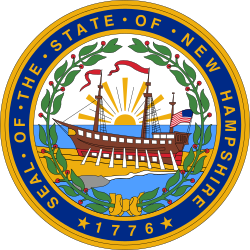General election
On election day, March 11, 1851, incumbent Democratic governor Samuel Dinsmoor Jr. won re-election by a margin of 8,967 votes against his foremost opponent Whig nominee Thomas E. Sawyer, but because no candidate received a majority of the popular vote, a separate election was held by the New Hampshire General Court, which chose Governor Dinsmoor as the winner. He thereby retained Democratic control over the office of governor. Dinsmoor was sworn in for his third term on June 3, 1851. [2]
This page is based on this
Wikipedia article Text is available under the
CC BY-SA 4.0 license; additional terms may apply.
Images, videos and audio are available under their respective licenses.



